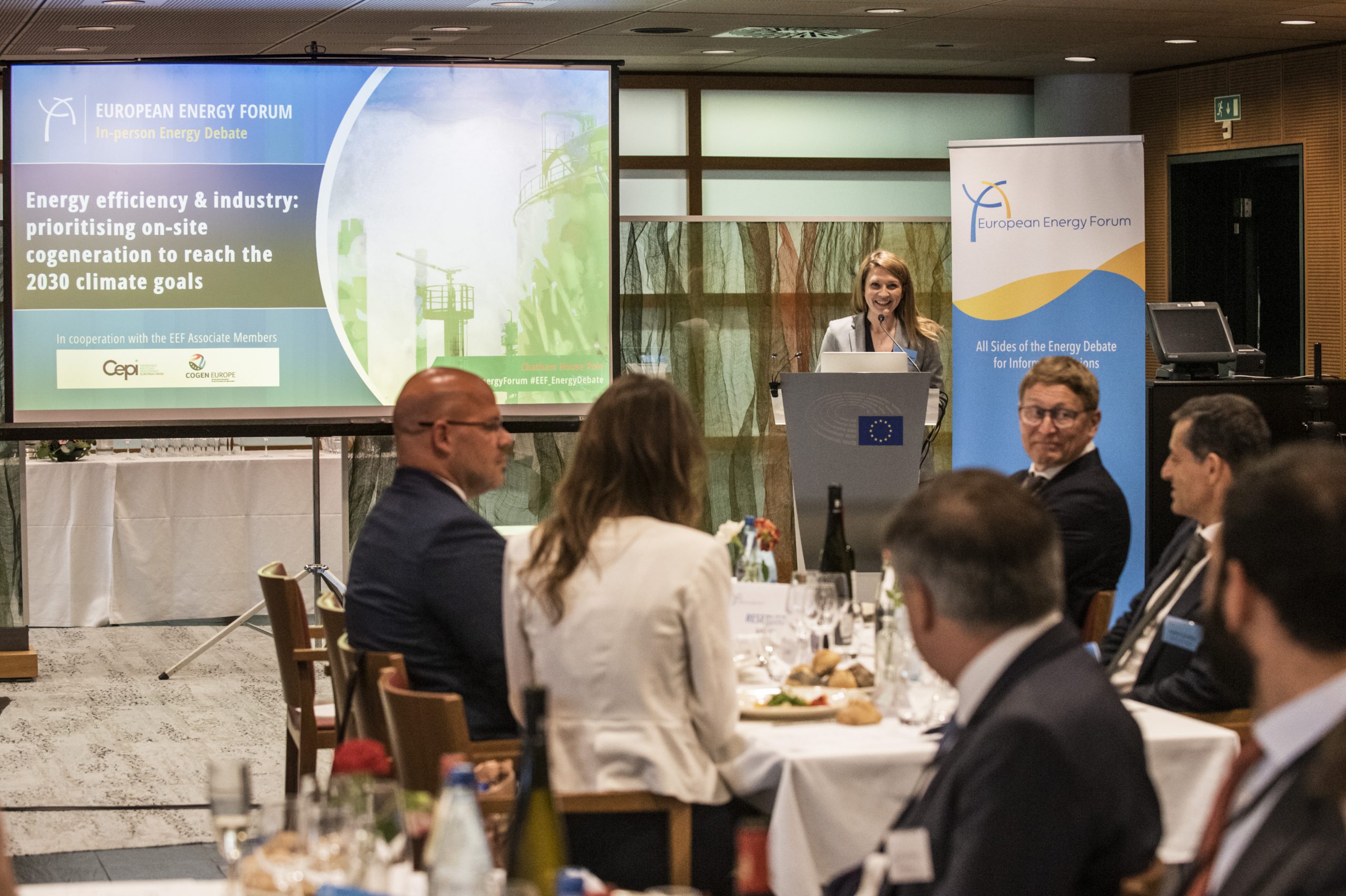Energy efficiency & industry: prioritising on-site cogeneration to reach the 2030 climate goals
Chaired by Tsvetelina Penkova MEP, Director of the EEF
Speakers:
Jori Ringman, Director General, Cepi
Hans Korteweg, Managing Director, COGEN Europe
The EEF held a dinner in Strasbourg on energy efficiency in industry, chaired by EEF Director Tsvetelina Penkova.
In her opening remarks, Ms Penkova said having proper discussions with experts from the energy industry is key for MEPs – as it enables them to make decisions that benefit all -, and stressed the crucial role energy efficiency plays in helping save both energy and capital.
That was reiterated by Hans Korteweg, Managing Director of COGEN Europe, who first introduced us the cogeneration – combined heat and power (CHP) – principle. By simultaneously producing heat and electricity from one energy input, CHP generates 40% more productive energy than heat-only or power-only generation and saves at least 10% of primary energy compared to best-in-class generation. Due to its decentralized nature, CHP also avoid grid losses. Energy savings thus occur at both production and distribution levels, which suggests that energy efficiency should be assessed throughout the whole value chain and not solely at final consumption. CHP is a fuel agnostic technology currently running mostly on natural gas, but ready to use decarbonised and renewable gases as soon as they become available. At present, CHP supplies 11% of electricity and 15% of heat in Europe. Being used in buildings, district heating and industry, it contributes to energy system integration and allows for significant primary energy savings (357 TWH) and CO2 emissions avoidance (250 MT). Mr. Korteweg concluded that all of this could at least double by 2030, provided the right policy framework is in place: an Energy Efficiency Directive (EED) prioritizing CHP use and setting CHP efficiency targets that are ambitious while remaining feasible.
Jori Ringman, Director General of the Confederation of the European Paper Industry (Cepi), explained that CHP is the first immediate way for the paper industry to produce the high-temperature process heat needed while also reducing emissions. CHP is indeed already operating in 95% of paper production sites in the EU. Yet the peculiarity of the steam needed (process steam) means the industry cannot optimize the production of electricity and steam, as the latter must live with the production. This, coupled with the lack of access to clean energy by some paper mills, may make it difficult for the industry to meet the direct CO2 emission threshold for CHP proposed in the EED, which Mr. Ringman defined as overly strict. He then explained the paper industry is a frontrunner in decarbonizing heat generation: 62% of its energy needs is already covered by renewable biomass, although this biomass potential is unequally distributed around the EU. Since it can produce biogas on site from the biomass available from the production process, the industry also has a remarkable potential of becoming a prosumer, thus contributing to the energy system’s efficiency. As CHP plays a key role in increasing the industry’s energy efficiency, the EED should promote its use by industrial players while also facilitating the uptake of renewable and low-carbon energy.
These introductory presentations were followed by an open and fruitful exchange between our speakers, the chairwoman, the EEF Active Member MEP Carlos Zorrinho and several EEF Associate Members from diverse energy sectors. They took the chance to discuss several points, among which CHP use in buildings, the future of biomass, the decarbonization of industrial heat at large, CHP as the pillar of efficient business models and the impact that an increasing share of prosumers could have on the EU energy network.



